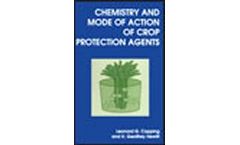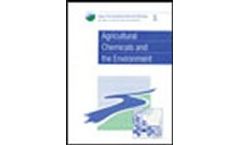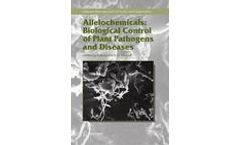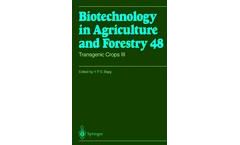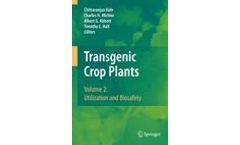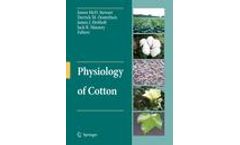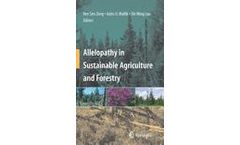Refine by
herbicide books
14 books found
Over the past 30 years one alarming trend is the emergence of plant species resistant to agrochemicals (e.g. insecticides, herbicides, fungicides). Considering the fact that these pesticides are crucial to human health and to food, feed and fiber production, impressive research was carried out during the last decade to understand the mechanisms of resistance development. ...
This book examines the chemistry and mode of action of herbicides, insecticides, fungicides and plant growth regulators. It follows crop protection strategies from early discoveries to the present day, emphasising the biochemical targets of the compounds discussed. ...
This statement applies equally to crop production through the use of fertilizers, herbicides and pesticides, as to livestock production and the associated use of drugs, steroids and other growth accelerators. ...
Topics cover:Developments in Pesticide Formulations—formulating unstable active ingredients in liquid delivery systems; techniques for overcoming herbicide antagonism; a technique for evaluating compatibility of pesticides and ...
The development of natural products such as herbicides, fungicides, and their role in biological ...
There has been tremendous progress in the genetic transformation of agricultural crops, and plants resistant to insects, herbicides,and diseases have been produced, field tested and patented. Transgenic Crops III compiles this information on ornamental, aromatic, medicinal and various other crops. ...
Readers will discover root-soil interactions and how to use them to manage the quality and productivity of our soils. Ranging from those identifiable from a moving vehicle, to those only elucidated with powerful molecular tools, the rhizosphere is examined by 28 authors in three sections: Macro-scale-- Learn the four classes of root that deal with soil spatial and temporal variability. ...
An Historical Perspective of Ancient Poison (Cutler). Plants and Plant Products Used im Mummification (David). Plants Used Medically by Indigenous Peoples (Lewis). Plants as Sources of Medicinally and Pharmaceutically Important Compounds (Kinghorn). SocioEconomic Poisons (Brenneisen, ElSohly). Antiparasitic Agents from Plants (Borris, Schaeffer). Antifungal Compounds in Plants (Kuc). ...
Development of transgenic crop plants, their utilization for improved agriculture, health, ecology and environment and their socio-political impacts are currently important fields in education, research and industries and also of interest to policy makers, social activists and regulatory and funding agencies. This work prepared with a class-room approach on this multidisciplinary subject will ...
Pesticide Formulations and Application Systems: 18th Volume (STP 1347) provides 26 peer-reviewed papers from application, formulation, and synthesis professionals from academia, government, and industry. The volume is divided into three areas: Current Issues -- the impact of pesticide and insect resistant crops on pesticide and adjuvant usage and regulatory concerns; the advantages and ...
Cotton production today is not to be undertaken frivolously if one expects to profit by its production. If cotton production is to be sustainable and produced profitably, it is essential to be knowledgeable about the growth and development of the cotton plant and in the adaptation of cultivars to the region as well as the technology available. In addition, those individuals involved in growing ...
A multibillion dollar industry that has tripled in the last ten years, turfgrass management plays an important role in landscaping, golf courses, and other sports surfaces. Proper management and cultural practices are crucial for the performance of these versatile grasses, creating a demand among scientists, researchers, and industry professionals for better quality, hardier grasses. The mounting ...
Simply put, allelopathy refers to an ecological phenomenon of plant-plant interference through release of organic chemicals (allelochemicals) in the environment. These chemicals can be directly and continuously released by the donor plants in their immediate environment as volatiles in the air or root exudates in soil or they can be the microbial degradation products of plant residues. The ...
The only hope of supplying the world's ever-increasing demand for aquatic food products is through aquaculture, and the vast majority of this is conducted in ponds. Although pond aquaculture may appear at first to be an archaic method of growing aquatic animals, it is one that is consistently profitable when the pond is managed properly. The most important aspect of pond management is the ...


